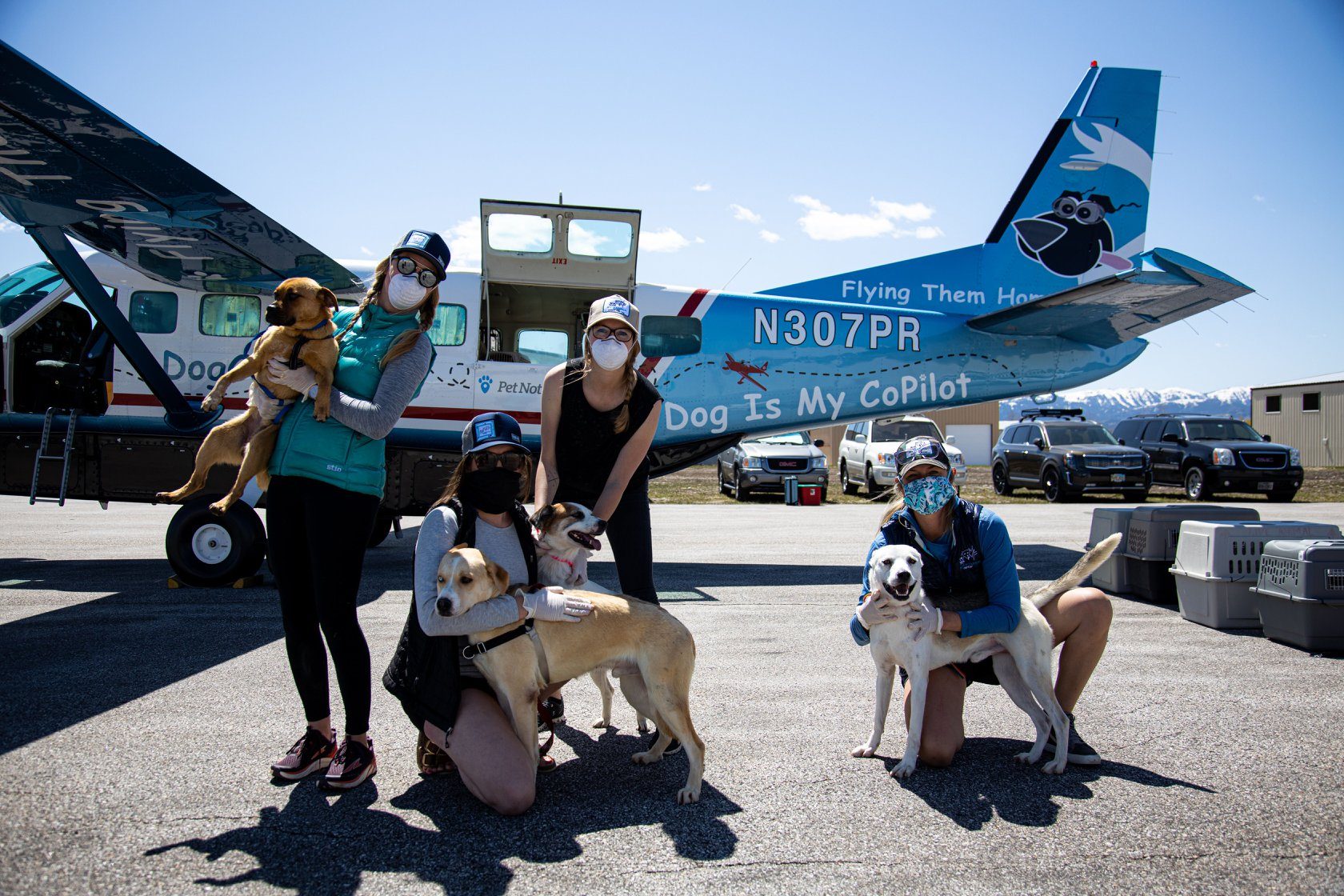Now more than ever, rescue transport is a critical part of saving pets in under-resourced shelters. Here’s how to safely run a strong transport operation in the age of sanitizing and social distance.
When COVID-19 arrived, animal welfare organizations across the country kicked into high gear to ensure the safety of pets in their care. They called on their communities as never before, and as a result, saw an unprecedented surge of adopters and fosters -- and even empty kennels for the first time ever!
But not all shelters have experienced the same relief. Many under-resourced facilities lack the necessary staff for a foster program and currently face limited adoption hours. Furthermore, they typically don’t have the ability to treat medical issues. These shelters have always relied on transports, which are viewed as emergencies and essential as the only other option is euthanasia. Now, on top of having no fosters, reduced adoption hours, and limited medical capability, they are confronted with the threat of closing off the rescue transport pipeline, a situation that would be truly devastating to lifesaving.
Virtual adoptions, drive-up clinic appointments, and online meet and greets are just a few of the many examples of how organizations have evolved in response to COVID-19. Just as our industry has adjusted these procedures, it is creative enough to ensure transports can continue safely, too. I’ve spent the last couple of months working with organizations on how they can send out their lifesaving transports while keeping people safe. Whether you’re looking to send your first transport out or start back up again, here are a few important tips I have learned through this process:
I recommend listing all your transport steps on a piece of paper, from preparation to the final foster/adoption hand-off when transport arrives. Then, highlight each step where people potentially congregate, come within the 6-foot distance, or contact a frequently touched surface or item. The highlighted steps are the ones that you will need to adapt to ensure that people stay safe. This Transport Protocol and video demonstrate ways to prepare and safely load/unload transport while social distancing and properly sanitizing. Remember not to let masks or gloves give you a false sense of security; maintaining a 6-foot distance from others is absolutely crucial to keep people safe. Even as you get more comfortable with your transporters and co-workers, consistency is key!
Once you’ve developed a solid plan for transport, communicate with your team and explain what the new process looks like. Consider physically rehearsing the steps before the actual transport to ensure everyone understands the new process and all questions are answered. It will be an easier and safer process if everyone is on the same page pre-transport versus having to shout instructions to each other when the transport vehicle arrives.
Even if you’re not an overly organized person, use tools such as shared spreadsheets, checklists, and regular group texts to help you keep things in line. Disorganization can add hours unnecessarily for your animals onboard. It also increases the chance of people huddling together to figure out the mix up (breaking social distancing). Sending electronic versions of medical records prior to transport, printing the final transport roster for the transporter, and making sure all animals and kennels are labeled will save hours of stress and “who’s this dog?” headaches.
We have become extremely accustomed to routing most of our day-to-day communication to our email inboxes. However, there is a ton of value in getting on the phone with your new rescue partner before your first transport. You want to make sure that the partnership is a good fit and that you ask key questions to really get to know the organization on the other end. As an industry, we are just scratching the surface of the partnership possibilities that are out there! It all starts with having productive conversations to learn about the partner organization’s strengths, challenges, and capabilities. In order to help guide your new partner conversations, consider this quick list of suggested questions. Every partnership is going to be a bit different, and you will want to have a conversation that feels natural for you, but if you need help on where to start, here’s a suggested introduction conversation guide.
This is the time to branch out and collaborate - we have seen communities move from a 30% to a 90% live release rate, mostly by embracing their rescue partnerships! If you’re not transporting right now, take this time to connect with your existing partners over the phone or on Zoom.
Once you start/resume transporting, remember to follow up after each one. Reach out to your partner and ask how it went for them. What could be done differently to make the process run even more smoothly the next time? How are the dogs and cats settling in? Are there any questions about the medical records?

If you’re an organization with a waiting list of fosters and adopters and have the capacity to help other communities, there are many animals and under-resourced shelters that need you. To get connected, join the AmPA! Shelter & Rescue Support Facebook group, become a member of Doobert.com, and/or email [email protected] and we will happily help you.
Now is the perfect time to reset and brainstorm ways to grow your partnerships. Together, we can save even more lives through transport!
Clare Callison is the Canine Lifesaving Advisor for American Pets Alive! Maddie’s® Lifesaving Academy.